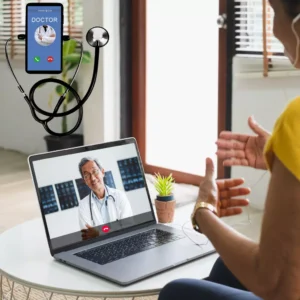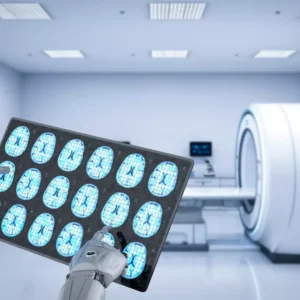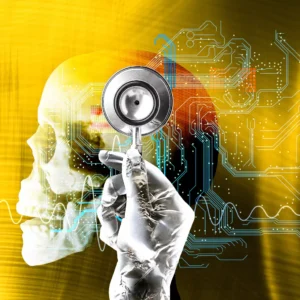
Revolutionise Healthcare with IPA Tools
Streamlining Processes, Improving Efficiency, and Enhancing Patient Care
Use Cases, Advantages, and Challenges
IPA tools, revolutionising industries worldwide, have now set their sights on transforming the healthcare sector.
With their advanced capabilities, these tools bring innovation and efficiency to healthcare operations. AI-Powered Process Automation tools are reshaping how healthcare organisations deliver care by automating processes, optimising workflows, and enabling intelligent decision-making.
From intelligent process automation (IPA) to robotic process automation (RPA), business rules engines (BRE), workflow automation tools, and low-code and no-code platforms, these cutting-edge technologies are streamlining operations, improving patient outcomes, and enhancing the overall healthcare experience.
Healthcare professionals can focus more on patient care by reducing administrative burdens, improving efficiency and providing higher-quality services.
Table of Contents

Arindam Roy
An Automation Consultant with 25+ years of IT Experience
Intelligent Process Automation in Healthcare
Definition and explanation of intelligent process automation (IPA) Intelligent Process Automation (IPA) combine artificial intelligence (AI) and automation technologies to streamline and optimise healthcare processes.
It uses machine learning algorithms, natural language processing, and robotic process automation (RPA) to automate repetitive tasks and make informed decisions based on data analysis.
Use cases of IPA in healthcare
- Streamlining patient admissions and discharge processes: IPA automates patient registration, appointment scheduling, and documentation, reducing wait times and improving patient experience.
- Automating claims processing and medical billing: IPA automates claims validation, coding, and billing processes, reducing errors and accelerating reimbursement cycles for healthcare providers.
- Enhancing medical records management and data analysis: IPA extracts and analyses patient data from medical records, enabling healthcare professionals to make better-informed decisions, identify patterns, and improve patient outcomes.
Advantages of IPA in healthcare
- Improved operational efficiency and cost reduction: IPA automates time-consuming manual tasks, freeing up resources and reducing operating costs.
- Enhanced accuracy and reduced human errors: IPA minimises errors in data entry, coding, and claims processing, leading to improved accuracy in healthcare operations.
- Increased compliance with regulatory requirements: IPA ensures adherence to healthcare regulations and standards, reducing compliance risks and improving overall quality of care.
Robotic Process Automation in Healthcare
Definition and explanation of robotic process automation (RPA) Robotic Process Automation (RPA) is a technology that utilises software robots or “bots” to automate repetitive and rule-based tasks in healthcare operations.
These bots mimic human interactions with systems, applications, and data to perform tasks efficiently and accurately.
Use cases of RPA in healthcare
- Automating repetitive administrative tasks: RPA can handle tasks like data entry, appointment reminders, and claims verification, freeing healthcare professionals to focus on more critical patient care activities.
- Enhancing appointment scheduling and patient communication: RPA can automate appointment scheduling, send reminders, and facilitate communication, improving patient engagement and satisfaction.
- Facilitating inventory management and supply chain optimisation: RPA can track inventory levels, automate replenishment processes, and optimise supply chain management, ensuring that healthcare facilities have the right resources at the right time.
Advantages of RPA in healthcare
- Increased productivity and time savings for healthcare professionals: RPA automates time-consuming tasks, allowing healthcare professionals to allocate more time to patient care.
- Improved patient experience and satisfaction: RPA streamlines processes, reduces waiting times, and improves communication, resulting in better patient experiences and higher satisfaction levels.
- Mitigating data entry errors and reduced fraud: RPA ensures accurate data entry and validation, reducing errors and minimising the risk of fraudulent activities.
Business Rules Engines in Healthcare
Definition and explanation of Business Rules Engines (BRE) are software components that enable the creation, management, and execution of business rules within healthcare systems.
These engines provide a framework for defining and automating complex decision-making processes based on predefined rules and logic.
Use cases of BRE in healthcare
- Enabling clinical decision support systems: BREs can integrate with electronic health records and clinical procedures to provide real-time guidance and recommendations for healthcare professionals, enhancing clinical decision-making.
- Automating medical guidelines and protocols: BREs can automate the application of medical policies and protocols, ensuring consistent and standardised care delivery across healthcare settings.
- Supporting personalised treatment plans: BREs can analyse patient data, medical history, and treatment guidelines to generate personalised treatment plans, optimising healthcare outcomes.
Advantages of BRE in healthcare
- Enhanced clinical outcomes and patient safety: BREs ensure healthcare providers adhere to evidence-based practices, reducing errors and improving patient safety and outcomes.
- Consistent and standardised care delivery: BREs enforce consistent guidelines and protocols, promoting standardised care across healthcare settings.
- Improved adherence to evidence-based practices: BREs facilitate integrating the latest research and best practices into clinical workflows, promoting adherence to evidence-based medicine.
Workflow Automation Tools in Healthcare
Definition and explanation of workflow automation tools are software solutions that automate and streamline the flow of tasks, information, and documents across different stages of healthcare processes.
These tools leverage technology to optimise workflows, improve collaboration, and enhance the overall efficiency of healthcare operations.
Use cases of workflow automation tools in healthcare
- Streamlining care coordination and patient handoffs: Workflow automation tools facilitate seamless communication and coordination among healthcare teams, ensuring smooth care transitions between departments and providers.
- Automating referral management and authorisation processes: These tools automate the management of patient referrals, ensuring timely processing, tracking, and authorisations, reducing administrative burdens and improving patient access to care.
- Optimising laboratory and diagnostic workflows: Workflow automation tools automate the ordering, tracking, and reporting of laboratory and diagnostic tests, minimising errors and expediting the delivery of results.
Advantages of workflow automation tools in healthcare
- Improved care coordination and communication: Workflow automation tools enable real-time collaboration, enhancing care team communication and fostering better coordination of patient care.
- Reduction in delays and bottlenecks: These tools eliminate manual handoffs, automate task assignments, and provide visibility into workflow statuses, reducing delays and bottlenecks in healthcare processes.
- Enhanced efficiency and resource allocation: Workflow automation tools optimise resource utilisation, allocate tasks based on availability and skillsets, and streamline workflows, improving efficiency and effective resource management.
Low-Code and No-Code Platforms in Healthcare
Definition and explanation of low-code and no-code platforms Low-code and no-code platforms are software development environments that enable the creation of applications with minimal coding requirements.
Low-code platforms provide a visual interface with drag-and-drop components, while no-code platforms offer a completely code-free development experience.
These platforms empower technical and non-technical users to build custom applications and automate processes quickly and efficiently.
Use cases of low-code and no-code platforms in healthcare
- Developing custom patient portals and mobile applications: Low-code and no-code platforms allow healthcare organisations to create intuitive patient portals and mobile applications, enhancing patient engagement and access to healthcare services.
- Creating automated reporting and analytics dashboards: These platforms enable the creation of interactive dashboards that provide real-time insights and analytics, supporting data-driven decision-making in healthcare organisations.
- Enabling rapid prototyping and iterative development: Low-code and no-code platforms facilitate agile development methodologies, allowing healthcare professionals to quickly prototype and iterate on solutions, reducing time to market.
Advantages of low-code and no-code platforms in healthcare
- Increased agility and flexibility in application development: These platforms accelerate the application development process, enabling healthcare organisations to adapt to changing needs and market demands more efficiently.
- Empowerment of non-technical healthcare professionals: Low-code and no-code platforms empower healthcare professionals without extensive coding knowledge to build and customise applications, reducing dependency on IT departments.
- Faster time to market for digital healthcare solutions: With simplified development processes, low-code and no-code platforms expedite the deployment of digital healthcare solutions, enabling healthcare organisations to deliver innovative services more rapidly.
Challenges and Considerations in Implementing IPA Tools in Healthcare
AI-powered Process Automation tools have become invaluable assets for the finance sector, offering numerous advantages that help organizations thrive in a competitive landscape.
Data privacy and security concerns
Implementing IPA tools in healthcare require careful attention to data privacy and security. As sensitive patient information is involved, healthcare organisations must ensure robust security measures, encrypted data transmission, and compliance with privacy regulations like HIPAA.
Integration with legacy systems and interoperability challenges
Integrating IPA tools with existing legacy systems can present challenges. Compatibility issues, data mapping, and interoperability concerns must be addressed to ensure seamless integration and data flow across various systems and applications.
Resistance to change and workforce readiness
Resistance to change can impede the successful implementation of IPA tools. Healthcare professionals may require training and support to adapt to the new processes and technologies. Ensuring workforce readiness and effective change management are crucial for a smooth adoption.
Regulatory compliance and legal considerations
IPA tools in healthcare must comply with industry-specific regulations and legal requirements. Organisations must navigate compliance challenges, such as data retention policies, consent management, and audibility, to maintain regulatory compliance and mitigate legal risks.
Conclusion
In conclusion, IPA tools hold immense potential for revolutionising the healthcare sector.
With their ability to automate processes, enhance decision-making, and improve efficiency, these tools offer numerous benefits. From streamlining patient admissions to optimising care coordination, AI-powered Process Automation tools empower healthcare organisations to deliver enhanced patient care and achieve operational efficiency.
However, careful planning and implementation are vital to address data privacy, integration, resistance to change, and regulatory compliance. Healthcare organisations must embrace BPA tools, leveraging their transformative capabilities to enhance patient outcomes and drive operational excellence.
By embracing these technologies, healthcare organisations can embark on a journey of innovation and improved healthcare delivery.





















